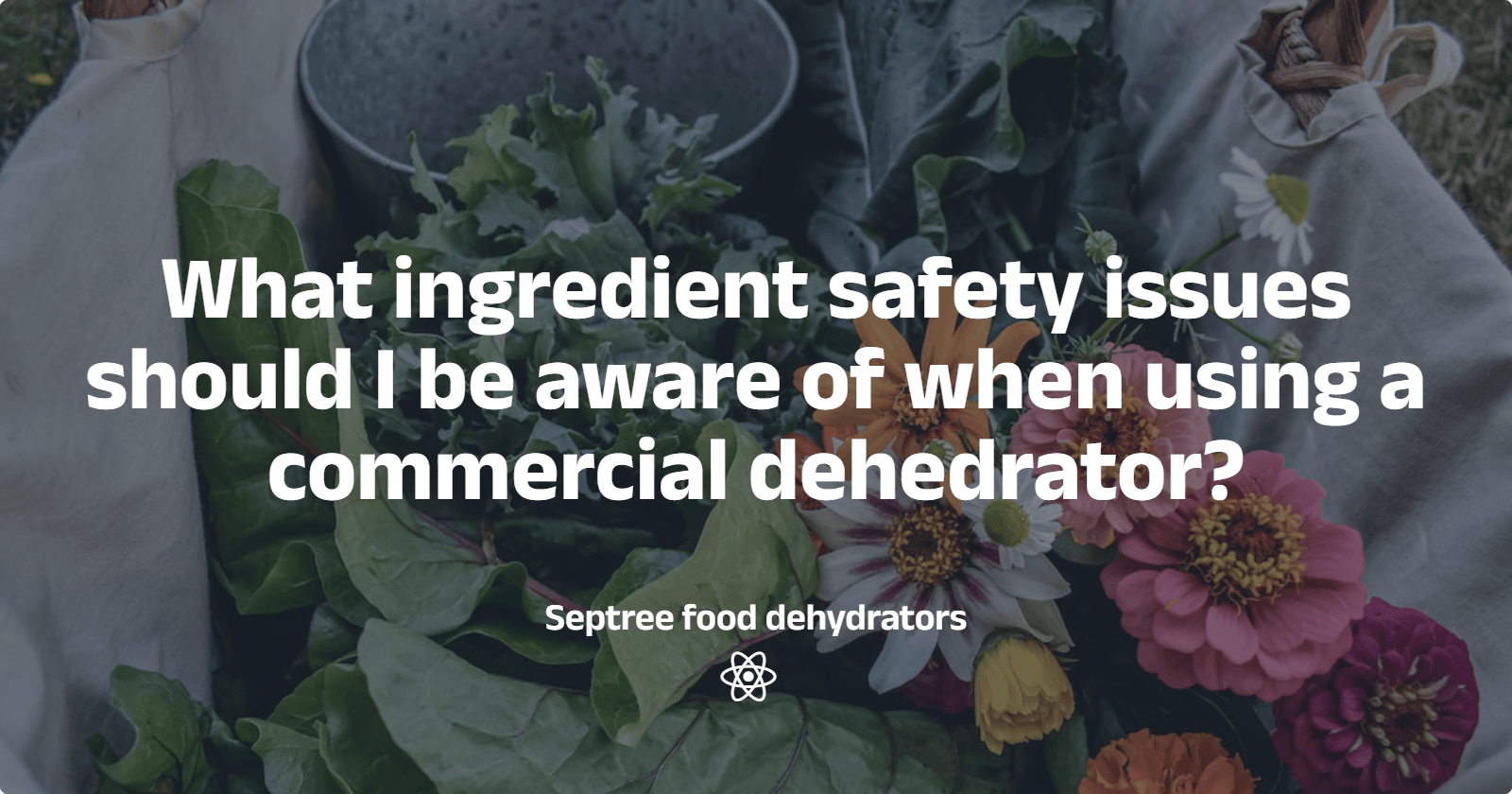What ingredient safety issues should I be aware of when using a commercial dryer?

When using a commercial food dryer, it's important to be aware of ingredient safety issues to ensure the production of safe and high-quality dried food products. Here are some key considerations:
Contamination: Ensure that the ingredients you use in the commercial dryer are free from contaminants such as dirt, insects, pesticides, and other foreign substances. Inspect and clean the ingredients thoroughly before placing them in the dryer.
Allergens: Take precautions to prevent cross-contamination with allergenic ingredients. If you dry different ingredients with allergenic properties, such as peanuts or gluten-containing grains, ensure proper cleaning and sanitation procedures are followed to avoid cross-contact between different ingredients.
Microbial Safety: Moisture in food can promote the growth of harmful microorganisms, including bacteria, yeasts, and molds. Properly drying ingredients reduces their moisture content and helps inhibit microbial growth. However, it's crucial to ensure that the drying process reaches temperatures that effectively kill or inhibit the growth of pathogens. Follow recommended drying temperatures and times to ensure microbial safety.
Temperature Control: Maintain accurate temperature control in the commercial dryer to achieve the desired drying results and ensure food safety. Inadequate temperatures may not fully remove moisture or destroy pathogens, while excessive temperatures can result in ingredient degradation or undesirable changes in flavor, texture, and nutritional value.
Hygiene and Cleanliness: Practice good hygiene and sanitation throughout the drying process. Regularly clean and sanitize the commercial dryer and drying trays to prevent the accumulation of dirt, residues, and microbial growth. Properly handle and store dried ingredients to prevent recontamination.
Storage Conditions: After drying, store the dried ingredients properly in clean, airtight containers or packaging to maintain their quality and prevent moisture absorption or recontamination. Proper labeling of the containers with the ingredient name, date, and storage instructions is also essential.
Compliance with Regulations: Ensure compliance with applicable food safety regulations and guidelines specific to your region. Familiarize yourself with the relevant regulations and stay updated on any changes in food safety requirements.
It's recommended to establish and follow a comprehensive food safety plan, including implementing good manufacturing practices (GMPs), conducting hazard analysis, and implementing appropriate control measures to mitigate any potential safety risks associated with ingredient drying in a commercial setting.
Contamination: Ensure that the ingredients you use in the commercial dryer are free from contaminants such as dirt, insects, pesticides, and other foreign substances. Inspect and clean the ingredients thoroughly before placing them in the dryer.
Allergens: Take precautions to prevent cross-contamination with allergenic ingredients. If you dry different ingredients with allergenic properties, such as peanuts or gluten-containing grains, ensure proper cleaning and sanitation procedures are followed to avoid cross-contact between different ingredients.
Microbial Safety: Moisture in food can promote the growth of harmful microorganisms, including bacteria, yeasts, and molds. Properly drying ingredients reduces their moisture content and helps inhibit microbial growth. However, it's crucial to ensure that the drying process reaches temperatures that effectively kill or inhibit the growth of pathogens. Follow recommended drying temperatures and times to ensure microbial safety.
Temperature Control: Maintain accurate temperature control in the commercial dryer to achieve the desired drying results and ensure food safety. Inadequate temperatures may not fully remove moisture or destroy pathogens, while excessive temperatures can result in ingredient degradation or undesirable changes in flavor, texture, and nutritional value.
Hygiene and Cleanliness: Practice good hygiene and sanitation throughout the drying process. Regularly clean and sanitize the commercial dryer and drying trays to prevent the accumulation of dirt, residues, and microbial growth. Properly handle and store dried ingredients to prevent recontamination.
Storage Conditions: After drying, store the dried ingredients properly in clean, airtight containers or packaging to maintain their quality and prevent moisture absorption or recontamination. Proper labeling of the containers with the ingredient name, date, and storage instructions is also essential.
Compliance with Regulations: Ensure compliance with applicable food safety regulations and guidelines specific to your region. Familiarize yourself with the relevant regulations and stay updated on any changes in food safety requirements.
It's recommended to establish and follow a comprehensive food safety plan, including implementing good manufacturing practices (GMPs), conducting hazard analysis, and implementing appropriate control measures to mitigate any potential safety risks associated with ingredient drying in a commercial setting.


Leave a comment